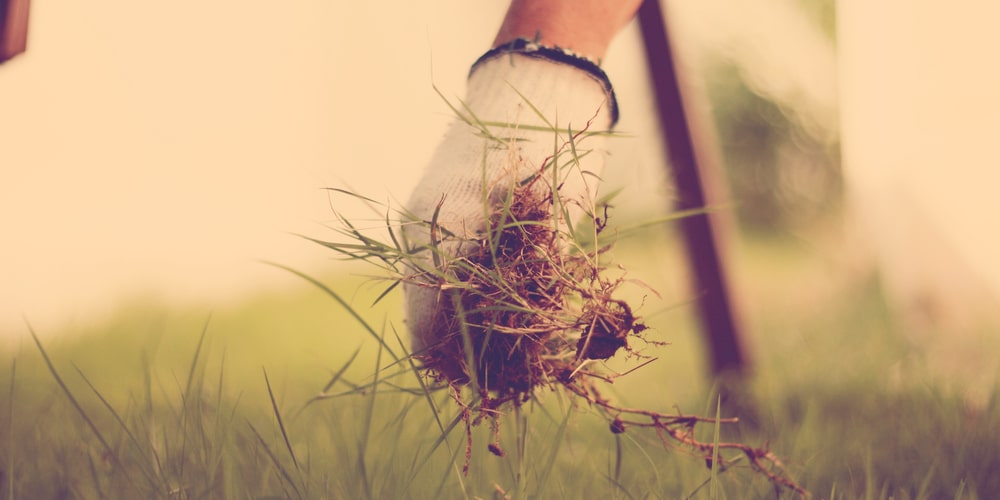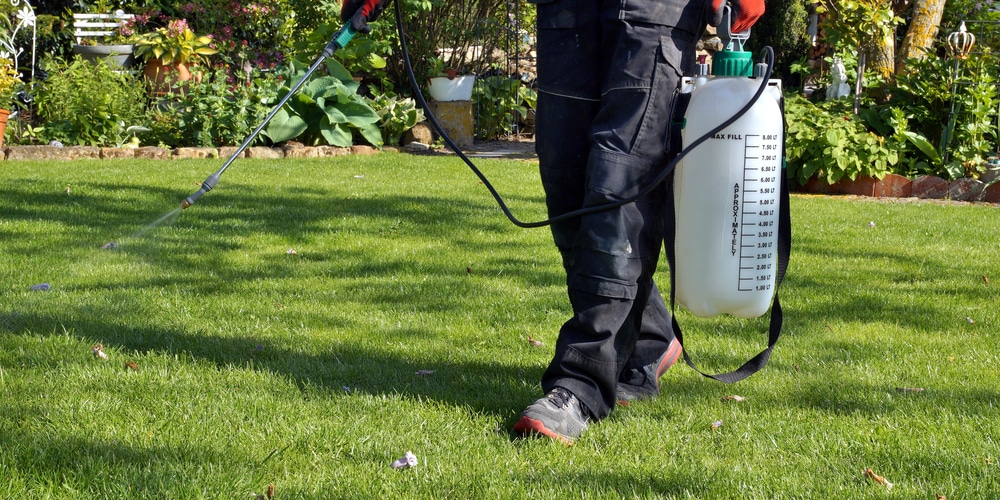Crabgrass is among the most invasive weeds. It’s a perennial hardy weed that’s able to survive through different growing conditions and can grow in garden beds, and even on concrete. Crabgrass can thrive in many different types of soils and climates. While some varieties of crabgrass are regarded as weeds, others are nutritious food and forage for animals. This article will answer the question, ‘how many types of crabgrass are there?’
How Many Types of Crabgrass Are There?

Typically, crabgrass is from the Digitaria family. This is derived from the Latin word ‘Digitus’, which means ‘finger’. There are about 33 different crabgrass varieties listed in the family. The vast majority of these crabgrass weeds are native to temperate and tropical regions. The following list includes the most common types of crabgrass:
Short, or Smooth Crabgrass
Being the most common type of crabgrass in lawns, smooth crabgrass is native to Asia and Europe, but it’s also linked to North America. It has a low-growing stem and green leaves. It’s typically found in the warm, moist areas of the United States.
It’s annual and has a very distinctive appearance with a long, thin blade that’s very upright. It’s distinguished from long crabgrass by the fact that it has a single whorl of spikes found at the end of its stem.
Long crabgrass
Also known as large or hairy crabgrass, long crabgrass is native to Europe, Asia and Africa. It has a much taller stem and grows well in rich clay or sandy soil. It’s a very hardy weed and can be found anywhere, including lawns, gardens, sidewalks, cracks, and even landfills.
Long crabgrass has a distinctive appearance, as it is usually taller than the other types of crabgrass and has long, thin blades that are more upright. This finger-like grass can grow up to 1-3 inches in length on a broad scale. However, if not mowed, it can grow up to 8 inches.
Asian crabgrass
Asian crabgrass, also known as tropical crabgrass, is an annual, sometimes perennial, weed that’s native to Asia and Australia. It can grow in many parts of the world, including in Canada, Africa, and the United States.
It is considered a very hardy weed because it can grow in harsh conditions such as high temperatures and dry soil. This type of crabgrass has a distinctive appearance as it is usually tall, has a long stem, and grows in clumps.
Southern crabgrass
Southern crabgrass is one of the most common types of crabgrass found in lawns, gardens, and fields. It’s a quite impressive weed that’s native to the Americas, Asia, and Africa.
It’s a very hardy weed as it can withstand very cold temperatures and many types of stresses such as drought, heat, and cold. It can grow in many different soil types, including sandy soil and dry soil.
It usually has a prominent midvein, and its leaf blades are either hairy or have very few hairs running all the way down to the base of the blade. Just like the large crabgrass, the leaf sheath of this grass has long hairs.
Less Common Crabgrass Types
The following types of crabgrass are not as common but are still found in many areas of America.
Blanket crabgrass
Blanket crabgrass is a short-lived perennial weed that has the scientific name Digitaria serotina. It’s distinguished from other crabgrass by its short, hairy leaves and spreads by stolons.
India crabgrass
As its name suggests, India crabgrass is native to India. It is a tiny plant with leaves of less than one inch (2.5 cm.) This hardy weed can tolerate drought, heat, and cold.
Texas crabgrass
Texas crabgrass is an annual plant that’s native to the Americas, Asia, and Africa. It is a very hardy weed as it can withstand extreme temperatures and many types of stresses, such as low water.
Carolina crabgrass
Also known as Fall witchgrass, Carolina crabgrass is a perennial weed that thrives best on the Coastal Plain, north-central Texas, and almost elsewhere in the U.S.A. Its leaves are very distinctive as they are long and narrow with an even length of hair on both sides. It has a very distinct leaf sheath.
Madagascar crabgrass
Madagascar crabgrass is a perennial plant in the family of True grasses. It’s hardy and has simple, broad leaves. Its leaves are long and narrow, with even some hairs on the lower sides.
Queensland blue couch
Queensland blue couch grass is a warm-season grass with a soft blue-green appearance. It is suitable for tropical Australia and southern Queensland. Queensland Blue Couch is ideal in coastal conditions and will perform well in high humidity. It is a dainty growing shade-loving grass. It has a very distinctive leaf sheath with long hairs that run the length of the blade.
Cotton Panic grass
Comb Finger grass is a warm-season perennial plant that’s tufted, hairy, and is usually 25 to 45cm high, but it can sometimes grow up to 80cm. It has different slender branched stems that are hairy at their base. The leaves are flat, soft and become crumpled and twisted with age and the leaf edges often become wavy. It has the distinction of being a weed that’s resistant to Roundup herbicide.
Comb Finger grass
This is an amazing plant of the grass family that’s native to tropical and warm weather regions but can also grow in subtropical, tropical, and cooler temperate areas. The plant is often distinguished by the long, finger-like inflorescences that they produce.
Naked crabgrass
Digitaria nuda, AKA Naked Crabgrass, is a species of grass in the True grasses family. Contrary to common crab grasses like the large crabgrass, naked crabgrass is known for being one of the most difficult to control with acetanilide herbicide.
Crabgrass Control
There are many types of crabgrass control methods available today, and they can be used to control the growth of this weed.
The most common ways to control crabgrass are cutting it down with a mower or pulling it out. Some people like to use a combination method by using a mower followed by hand-pulling/ you can also use herbicides on your lawn.
However, remember that you should always follow directions before using any type of herbicide on your lawn because it can be harmful to your plants, animals and even you when misused.
Related Article: When to Apply Crabgrass Preventer? Before or After Rain

